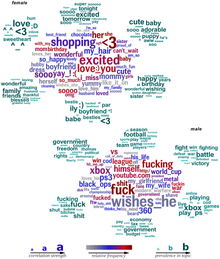The main entity in this text is “Gender Differences in Social Network[1] Service Use”. This term refers to the varied ways in which men and women engage with social media[2] platforms. It encapsulates differences in platform preference, with women often favoring sites like Facebook[3] and Pinterest[4], and men showing a greater inclination towards forums like Reddit[5]. It also includes variances in usage behavior and privacy[6] concerns, with women generally using social media more for social connections and being more guarded about their personal information. Additionally, it highlights how traditional gender norms and stereotypes may influence online behavior and identity. This term also reflects the growing recognition of gender diversity on social media platforms, which has led to increased options for gender identities.
Men and women use social network services (SNSs) differently and with different frequencies. In general, several researchers have found that women tend to use SNSs more than men and for different and more social purposes.
